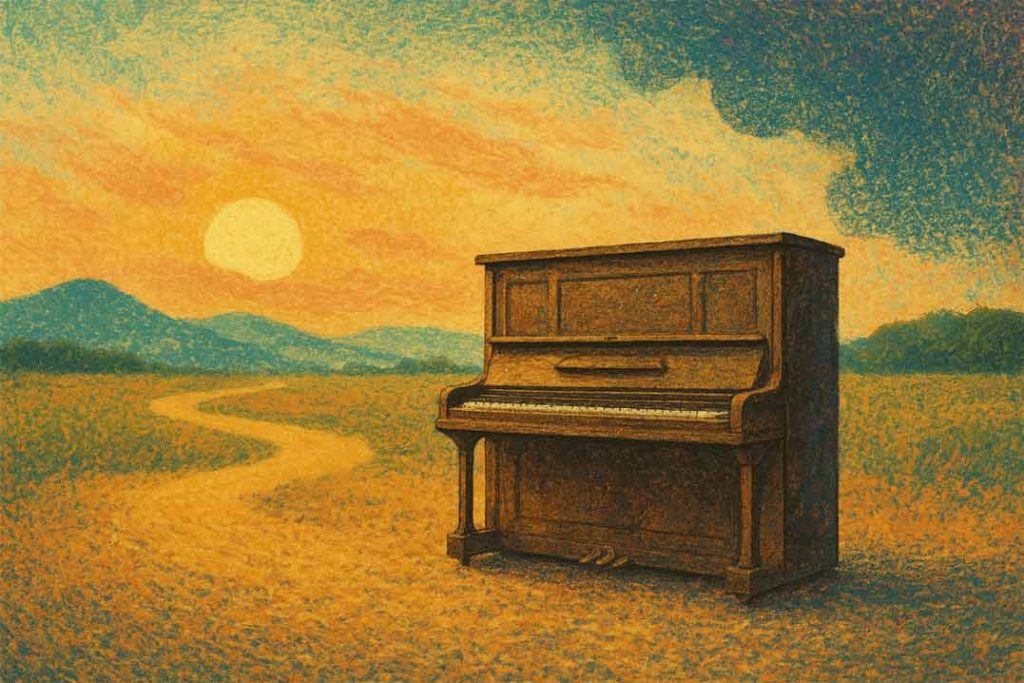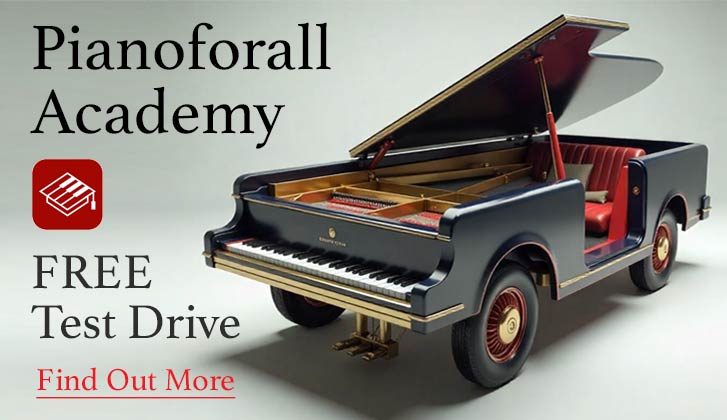Some pianos hold more than melodies; they hold history.
Few capture this as powerfully as the modest walnut-finished Steinway upright on which John Lennon composed Imagine.
In the late 1990s, this unassuming instrument took on a second extraordinary life, thanks to George Michael.
A Piano for a Dreamer
In December 1970, John Lennon walked into Steinway’s showroom and purchased a Model Z upright for just over £1,000. By rock-star standards, it was hardly extravagant. This was not a flamboyant concert grand but a compact domestic instrument, perfectly suited to a studio or drawing room.
The piano was built in Hamburg — a detail not lost on Lennon. A decade earlier, The Beatles had spent long nights honing their craft in the clubs of Hamburg’s Reeperbahn, learning the stamina and showmanship that would carry them from local obscurity to global phenomenon. To own a piano from Hamburg may have carried a private resonance, a reminder of those formative years when the band cut their teeth in a German port city far from home.
Installed at Tittenhurst Park, Lennon’s country estate in Berkshire, the piano quickly became central to his creative process. It was at this unassuming upright, in the summer of 1971, that he composed and recorded Imagine — a song that would become a cultural anthem.
The Auction That Made Headlines
Nearly three decades later, in October 2000, the Steinway was placed under the hammer at London’s Hard Rock Café. The atmosphere was charged. This was not just a piano; it was an artefact of 20th century popular culture.
The bidding rose quickly, with Noel Gallagher of Oasis and Robbie Williams rumoured among the contenders. When the hammer finally fell, it was George Michael who had secured the piano for £1.45 million — then the highest price ever paid for a piano.
Michael was clear about his motives. He wasn’t interested in owning the instrument for himself, or stashing it away in a vault. He wanted it to remain accessible — and crucially, to remain in the UK.
“It’s not the type of thing that should be in storage somewhere,” he explained. “It should be seen by people. It belongs here.”
“It Belongs to the People”
Michael understood the symbolic weight of Lennon’s piano.
In interviews, he stressed that this was no mere collectible. He saw himself as a custodian, protecting the piano from vanishing into the hands of a private memorabilia hoarder. His vision was that the public should be able to see, touch, and feel its presence.
The choice was consistent with Michael’s character. He had always been generous in private acts of philanthropy; now, his generosity extended to culture itself.
A Brief Creative Encounter
For a short while, the piano stood in Michael’s home. He did play it — but only sparingly, almost reverently. Reports suggest he sketched ideas on it, but he was quick to clarify:
“It’s not about me sitting there trying to write the next Imagine. It’s about knowing it’s in safe hands.”
Michael respected that Lennon’s Imagine piano was not a talisman to be exploited, but a symbol to be safeguarded.
The Piano on Tour: A Witness to History
True to his word, Michael didn’t hide the piano. Instead, he sent it out into the world on what became known as the “Imagine Piano Peace Tour.”
The piano travelled to locations scarred by violence and conflict, photographed in settings that forced viewers to reflect:
- Dealey Plaza, Dallas — where President Kennedy was assassinated.
- Lorraine Motel, Memphis — where Martin Luther King Jr. was shot.
- Ground Zero, New York — after the September 11 attacks.
- Belfast, Northern Ireland — once divided by violent sectarian conflict.
Against each backdrop, the upright looked almost fragile: a plain wooden piano set against sites of loss. Yet this fragility amplified its power. The message was simple but profound — music as memory, music as peace.
From Lennon’s Childhood to His Legacy
The piano’s eventual home would connect Lennon’s past with his message of hope. It is now on permanent loan to Strawberry Field in Liverpool, the Salvation Army-run exhibition and training centre located at the site of Lennon’s childhood playground.
Strawberry Field had begun as a private Victorian home built in the mid-19th century, before becoming a children’s home run by the Salvation Army in the 1930s. Young John Lennon often played in its gardens during the 1950s. Those childhood memories later inspired one of his most celebrated Beatles songs, Strawberry Fields Forever.
Today, Strawberry Field has been transformed into both a Beatles heritage site and a hub for social good: it provides training and opportunities for young people with learning difficulties. Julia Baird, Lennon’s sister, serves as its honorary president.
By situating the Imagine piano here, Michael’s estate honoured his wish: that it remain in Britain, accessible, and meaningful. Visitors now encounter it not just as a relic but as part of a living project, where Lennon’s legacy inspires new generations.
Why This Story Still Resonates So deeply
- The Piano as Witness. A humble Steinway upright, once worth £1,000, became the vessel for one of the most enduring songs of the 20th century.
- The Custodian, Not the Owner. George Michael didn’t buy the piano for glory. He bought it to keep it safe, to keep it public, and to keep it British.
- The Continuity of Place. From Lennon’s childhood games in Strawberry Field to his adulthood composition of Imagine, the piano’s final home ties together threads of innocence, creativity, and hope.
- The Lesson for All Players. Whether you own a Steinway, a Yamaha digital, or a second-hand upright, the act of sitting at a piano is an act of connection — to history, to culture, to imagination.
A Final Note
John Lennon once sang, “You may say I’m a dreamer, but I’m not the only one.”
George Michael proved those words true.
His purchase ensured that Lennon’s piano would not be silenced in a vault but would continue to speak to people around the world.
Today, in Strawberry Field’s serene setting, the piano sits quietly. Yet it sings still — not only of Lennon’s vision of peace, but of Michael’s belief that some things are too important to be hidden away.



